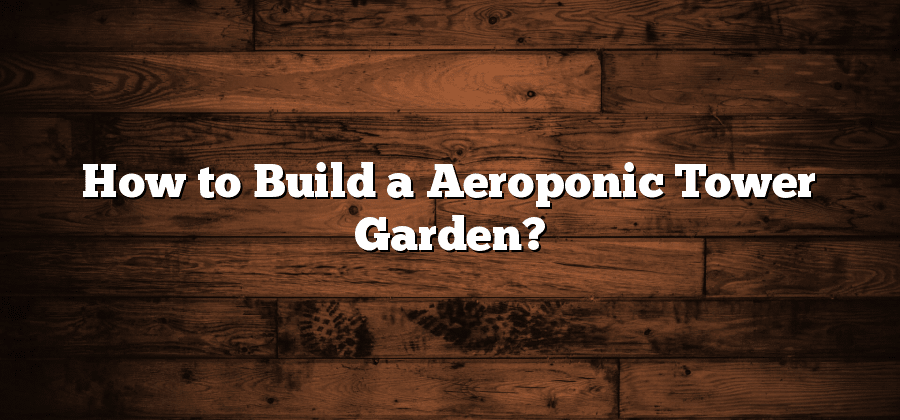Understanding Aeroponic Technology for Vertical Gardening
Aeroponic technology has revolutionized the way we approach vertical gardening. Unlike traditional soil-based gardening methods, aeroponics allows plants to grow without the need for soil, relying instead on a nutrient-rich mist that is delivered directly to the plant’s roots. This innovative technique offers numerous benefits, including increased oxygenation and nutrient absorption, faster growth rates, and improved overall plant health.
In aeroponic systems, plants are typically suspended in a vertical tower structure, with their roots exposed to the nutrient mist. This setup maximizes space utilization and allows for vertical growth, making it an ideal solution for urban environments with limited space. Additionally, the absence of soil eliminates the risk of traditional gardening issues such as pests, diseases, and weeds. Plus, aeroponic gardening requires significantly less water than traditional methods, making it a more sustainable and eco-friendly choice. As the popularity of vertical gardening continues to rise, understanding aeroponic technology is crucial for anyone looking to harness the benefits of this innovative approach to growing plants.
Selecting the Right Location for Your Tower Garden
When it comes to selecting the right location for your tower garden, there are several factors to consider. Firstly, you need to ensure that the area receives ample sunlight throughout the day. Tower gardens require at least 6-8 hours of direct sunlight to promote healthy plant growth. Therefore, it is essential to choose a location that is not obstructed by tall buildings, trees, or other structures that may cast shadows and limit the amount of sunlight reaching your garden.
Another important aspect to consider is the accessibility of the location. You will need to frequently tend to your tower garden, including watering, pruning, and harvesting. Therefore, it is advisable to choose a location that is easily accessible to you, preferably near a water source. This will make maintenance tasks more convenient and ensure that your plants receive proper care.
Additionally, it is crucial to consider the stability and weight-bearing capacity of the chosen location. Tower gardens can become quite heavy once filled with water and plants, so it is essential to place them on a solid and well-supported surface. Avoid placing them on weak or unstable structures that may pose a risk of collapsing under the weight.
By carefully considering these factors, you can select the ideal location for your tower garden, providing optimal conditions for your plants to thrive.
Choosing the Best Aeroponic Tower Garden System
When it comes to choosing the best aeroponic tower garden system, there are several factors to consider. Firstly, it is important to determine the size and scale of your vertical garden project. Are you looking to set up a small tower garden for personal use, or do you have a larger commercial operation in mind? Understanding your specific needs and goals will help you select a system that is both efficient and cost-effective.
Additionally, it is crucial to assess the quality and durability of the tower garden system. Look for reputable brands and manufacturers that have a proven track record in the industry. Read customer reviews and testimonials to get a sense of the overall performance and longevity of the system. Investing in a high-quality tower garden will ensure that your plants thrive and that your investment lasts for years to come.
Setting Up the Foundation and Base for Stability
To ensure the stability of your aeroponic tower garden, it is crucial to set up a strong and sturdy foundation. This step is essential because it provides a solid base for your vertical gardening system, preventing it from toppling over or getting damaged when exposed to wind or other environmental factors.
Firstly, you need to choose a suitable location for your tower garden. Look for an area that receives adequate sunlight throughout the day and is easily accessible for maintenance. Avoid placing it near trees or buildings that may cast shadows, as this can inhibit the growth of your plants. Once you have identified the perfect spot, clear the area of any debris or obstacles and level the ground as much as possible.
Next, you will need to prepare the foundation. This can be done by digging a hole that is deep enough to accommodate the base of your tower garden system. It is recommended to go at least one foot deep to ensure stability. Fill the hole with gravel or a sturdy base material, such as compacted sand, and then firmly pack it down. This will provide a secure foundation for your tower garden and help distribute the weight evenly, reducing the chance of any leaning or tilting.
Assembling the Tower Garden Structure Step by Step
Step 1: Lay out all the components of your Aeroponic Tower Garden system in a clear and organized manner. Ensure that you have all the necessary parts, including the tower sections, supporting brackets, base, and any additional accessories or attachments. It is essential to review the assembly instructions provided by the manufacturer and familiarize yourself with the different components and their functions before proceeding.
Step 2: Begin the assembly process by attaching the supporting brackets to the base of the tower sections. Make sure to follow the provided instructions carefully, as the specific attachment method may vary depending on the model of the Tower Garden system you have chosen. Use sturdy fasteners to ensure stability and avoid any wobbling or tilting of the structure. Once the brackets are securely attached, you can start building the tower by stacking the sections one on top of the other, following the manufacturer’s guidelines.
Remember, proper assembly is crucial for the overall stability and functionality of your Aeroponic Tower Garden. Take your time and carefully execute each step, ensuring that all components are securely and correctly fitted together. By doing so, you will create a solid foundation for your vertical garden, allowing your plants to thrive in a well-structured and flourishing environment. Keep this in mind as you move forward with assembling your Tower Garden structure.






